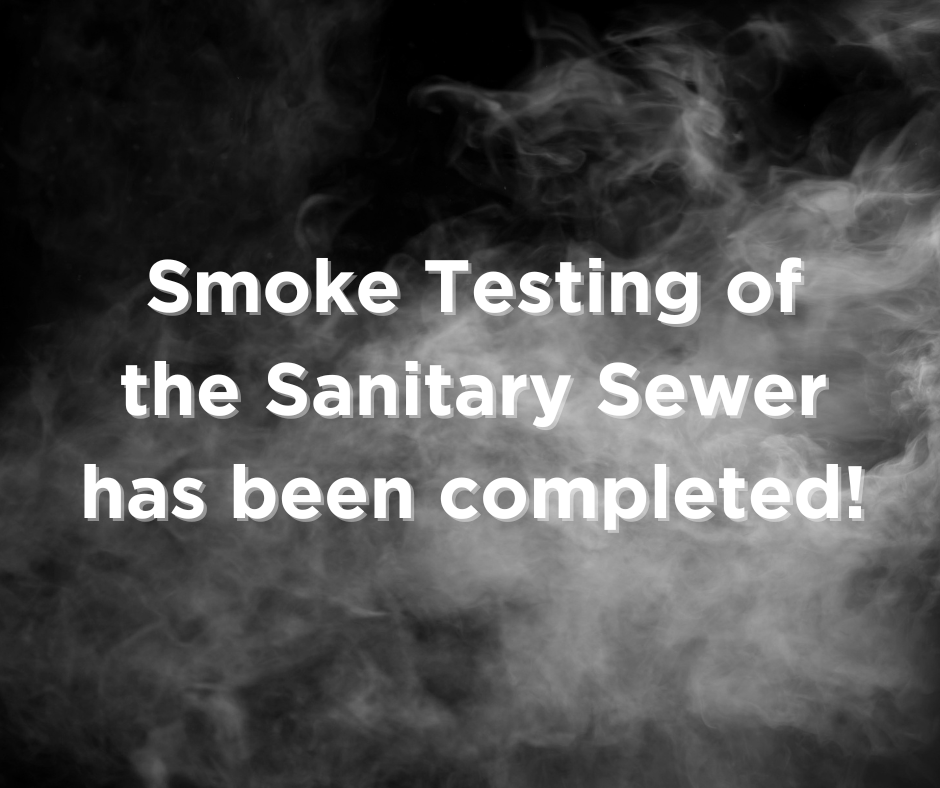Update at 1:45 p.m. Oct. 2: Smoke Testing of the sanitary sewer system in Nevada has been completed ahead of schedule. Thank you for your cooperation.
Residents are encouraged to pour a gallon of water into each of their drains to ensure traps are sealed before we test your area!
Smoke testing of our sanitary sewer system began today. It will continue through eight days (Monday through Thursday) weather conditions permitting. Smoke testing is planned through Oct. 3. (Fridays will be utilized for testing if there is a weather delay)
This is the daily schedule for areas of the city:
Day 1
Testing will follow the West Indian Creek trunk from south of West N Avenue to the old sanitary plant north of Highway 30.
Day 2
Testing will be conducted in the neighborhood bordered north by W Avenue, east by 10th and 11th street, South by the Union Pacific Railroad, and west by 1st street.
Due to some heavy mid-day rain, Day 2 testing was halted over the noon hour, and Day 3 will resume in the Day 2 areas above, and then move on to areas of Day 3.
Day 3
Testing will be conducted in the neighborhood bordered north by Union Pacific Railroad, east by 5th Street, South by E Avenue, and west by 4th Street.
Day 4
Testing will be conducted in the areas west of the West Indian Creek, including West F Avenue, West K Avenue, Cherokee Street, Apache Street, Westwood Drive, West E Avenue, Meadow Lane, Academy Circle, and the area around the old sanitary plant.
Day 5
Testing will be conducted in the neighborhood bordered north by Union Pacific Railroad, east by 11th and 13th Street, South by G Avenue, and west by 6th Street. There is a need to get on the roof of some of the main street buildings to check for smoke blowing from roof drains
Day 6
Testing will be conducted in the neighborhood bordered north by Union Pacific Railroad and G Avenue, east by 19th Street, South by C Avenue and Union Pacific Railroad, and west by 6th Street and 13th Street.
Day 7
Testing will be conducted in the Southeast portion of town bordered north by SCORE Recreation Athletic Complex, east by South 19th street, South by Nevada Street and west by South 11th Street and Shagbark Drive.
Day 8
Testing will be conducted in the neighborhood bordered north by Highway 30, east by Southwoods Drive, South by Maple Avenue, and west by SW 4th Street and any other areas.
We will post reminders of the day and location for each day of the testing period. Remember, each day is dependent on weather conditions being good for testing.
Sanitary sewer smoke testing involves field crews placing an industrial blower on a manhole and introducing low-pressure, nontoxic, nonflammable, residue-free smoke that fills the mainline and service connections. As the smoke travels through the pipes, any leaks—whether at manholes, cleanouts, street gutters, or even indoor fixtures—become instantly visible at the ground surface, revealing cracks, faulty joints, and unauthorized connections. This method is the most efficient, cost-effective way to pinpoint unauthorized inflow and infiltration that threaten proper wastewater treatment.
If smoke enters your house, remain calm, open windows to ventilate, note the entry point, and notify testing personnel. The smoke itself poses no health risk. Smoke in a house can indicate plumbing defects that allow sewer gases in. Any smoke will clear within minutes with proper ventilation. Smoke alarms may activate. If smoke does enter a building, please call 515-663-9997.
Frequently Asked Questions
How does smoke testing work? Field crews blow air and smoke into the sanitary sewer system in the street and monitor where smoke escapes the system. The smoke under pressure will fill the main line as well as any connections and then follow the path of any leak to the ground surface, quickly revealing the source of the problem.
What are the benefits of smoke testing? Smoke testing is the most efficient and cost effective way to locate and identify where unauthorized water is entering the public portion of the sewer system and find areas of the sewer system that need improvement. Smoke testing is becoming a requirement nationwide for locating unauthorized water problems that are threatening the ability to properly treat wastewater.
How long will it take? While crews might be in your area for a few hours, each actual smoke test setup takes approximately 15 minutes to complete. Most houses will only be within the testing area for one or two tests.
What should I do if smoke gets into the house? Do not be alarmed. Open the windows to allow ventilation and note the location of the smoke emission. Smoke will clear within a few minutes. If smoke does enter a building, please call 515-663-9997.
I am a pet owner and I will not be at home during the testing. Should I be concerned? The smoke is not harmful to pets. As long as
windows are left open, any smoke that enters the building will dissipate in a few minutes.
What does it mean if smoke enters my house? If smoke enters your home during the test, it may indicate there are deficiencies in the plumbing that may allow sewer gases to enter. Plumbing fixtures in your home or business are connected to the sanitary sewer, therefore there is potential for smoke to enter if the drains are not connected properly. This happens particularly under the following circumstances:
• The vents connected to your building’s sewer pipes are inadequate, defective, or improperly installed.
• The traps under sinks, tubs, basins, etc., are dry, defective, or improperly installed.
• The pipes, connections, or seals in the waste water drain system in and/or under your building are damaged, defective, have plugs missing, or are improperly installed.
Simply run water down the drain for a minute to ensure that the trap is not dry. It is important to locate dry traps as they could allow sewer gases to enter the home.
Can the smoke testing activate the smoke alarms? Yes, smoke alarms may activate during smoke testing. If possible, open windows and/or doors for ventilation.
If smoke does enter a building, please call 515-663-9997.





